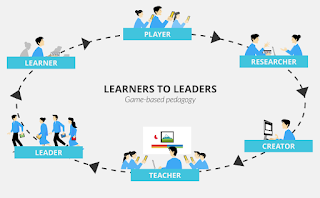We’ve long known that playing games can help people to learn
as well as being fun, that’s why we play games with our kids, and it’s not a
new concept to bring games into instructional design. Disney coined the phrase
‘edutainment’ back in the 1940’s and ‘gamification’ was probably first used by
Nick Pelling, creator of games for the BBC Micro and Commodor in the 1980’s.
Kevin Werbach of Wharton offers a definition for the term ‘gamification’:
Engagement,
challenge, progression, accomplishment, how the learner did, what he or she could have done better, what the next
challenge is to help them improve,
plenty of formative assessment giving you feedback
on how you’re doing; if you’re not doing so well, guidance in what you can do to improve, helping you get good at
something by providing lots of
opportunities to try again, providing
help when you need it, being adaptive
to your learning pace, or providing non-linear that
open up new and more difficult challenges
that further your progress though the course, recognizing achievement, either through intrinsic or extrinsic
rewards – getting to the next level, collecting badges or trophies.
“The use of game elements and game design techniques
in non-game contexts”.
We knew back then what the core principles were in games
design that were beneficial for instructional design. I can boil them down to
just four:
The gamification should be centered around learners. After
all, if the game isn’t about the player, there’ll be no one playing it.
We can learn a lot from games design that provides a
framework for making online learning experiences successful for learners when
there’s no instructor present.
In addition, gamification focuses on short-term, achievable
goals with clear rewards and provides a framework for learning new
material.
Duolingo provides a great example of learners
setting their goals and working to the next. What’s more, games give
instant feedback. This is something we do all the time in good eLearning,
fostering activity and formative feedback loops, which provide challenges to
learners and then adaptive feedback on their response. If you think about a
well-formed quiz interaction, this is what happens: you pose a challenge with a
question, elicit a response and then give feedback on.
In summary, to create a great gamified curriculum, you need to consider; learner
centricity, engaging your learner, providing intrinsic motivation as well as
extrinsic (a sense of accomplishment), with well designed challenges and rich
feedback, as well as opportunities for learners to take different pathways
through the course.



No hay comentarios:
Publicar un comentario